-
 Bitcoin
Bitcoin $119800
1.38% -
 Ethereum
Ethereum $3873
3.25% -
 XRP
XRP $3.247
1.85% -
 Tether USDt
Tether USDt $1.001
0.02% -
 BNB
BNB $840.4
5.94% -
 Solana
Solana $190.0
2.55% -
 USDC
USDC $1.000
0.03% -
 Dogecoin
Dogecoin $0.2433
2.69% -
 TRON
TRON $0.3197
-0.05% -
 Cardano
Cardano $0.8367
1.39% -
 Sui
Sui $4.327
3.11% -
 Hyperliquid
Hyperliquid $44.00
0.31% -
 Stellar
Stellar $0.4461
1.76% -
 Chainlink
Chainlink $19.25
4.61% -
 Hedera
Hedera $0.2941
3.90% -
 Bitcoin Cash
Bitcoin Cash $598.4
6.89% -
 Avalanche
Avalanche $26.19
4.67% -
 Litecoin
Litecoin $115.1
0.50% -
 Shiba Inu
Shiba Inu $0.00001427
1.55% -
 Toncoin
Toncoin $3.379
2.01% -
 UNUS SED LEO
UNUS SED LEO $8.966
-0.16% -
 Ethena USDe
Ethena USDe $1.001
0.02% -
 Uniswap
Uniswap $11.04
4.16% -
 Polkadot
Polkadot $4.239
2.00% -
 Monero
Monero $324.6
0.36% -
 Bitget Token
Bitget Token $4.672
2.46% -
 Pepe
Pepe $0.00001294
2.69% -
 Dai
Dai $0.0000
0.01% -
 Cronos
Cronos $0.1443
2.71% -
 Aave
Aave $302.9
1.98%
What is the transparency and audit mechanism of USDT?
USDT's transparency and auditing remain highly debated, with concerns over the lack of independent, real-time audits and the limitations of traditional methods in verifying its claimed 1:1 USD backing.
Feb 28, 2025 at 12:54 am
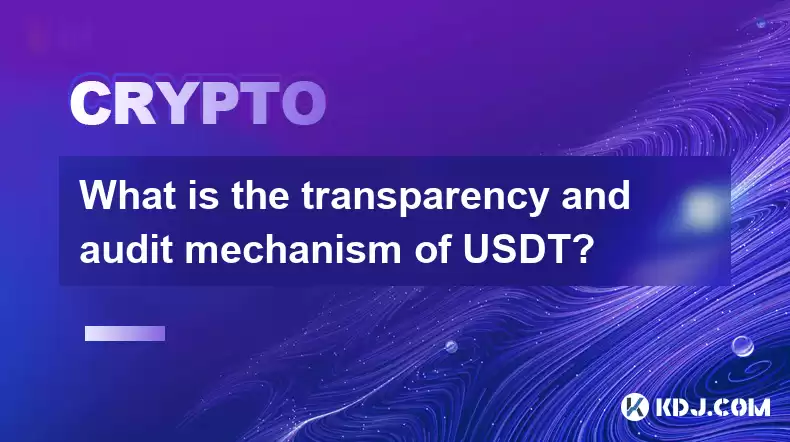
What is the Transparency and Audit Mechanism of USDT?
Key Points:
- USDT's transparency and audit mechanisms have been a subject of significant scrutiny and debate within the cryptocurrency community. The claims of full backing and the methods used to verify this backing have evolved over time, leading to ongoing concerns.
- Tether's published attestations and reserves reports, while providing some level of information, are not considered fully transparent by many experts and critics. The lack of independent, real-time audits significantly impacts the trust placed in the stability of USDT.
- The evolution of Tether's auditing practices reflects the ongoing tension between the need for transparency and the complexities of managing a large-scale stablecoin operation. Concerns about conflicts of interest and the limitations of traditional auditing methods in the crypto space continue to fuel the debate.
- Understanding the intricacies of USDT's transparency and audit mechanism requires a close examination of its historical evolution, the ongoing challenges it faces, and the implications for the broader cryptocurrency ecosystem.
Understanding USDT's Transparency and Audit Mechanism:
- The Evolution of Tether's Claims and Audits:
Initially, Tether claimed a 1:1 backing of USDT with US dollars held in reserve. However, this claim has been challenged repeatedly. Early attempts at transparency were limited and lacked the rigorous independent verification required to build widespread trust. The absence of consistent, comprehensive audits fuelled skepticism and accusations of insufficient reserves or even fraudulent activity. The lack of real-time, publicly accessible data on the composition and location of Tether's reserves further exacerbated these concerns. This initial lack of transparency led to considerable volatility in the crypto market, especially during periods of uncertainty surrounding Tether's financial health. The company's initial responses to these criticisms were often perceived as inadequate, contributing to a growing sense of distrust among investors and regulators. The lack of a robust, independent auditing process meant that verifying Tether's claims relied heavily on the company's self-reported data, which raised concerns about potential conflicts of interest and the possibility of manipulation. This period underscores the crucial role of independent audits and transparent reporting in maintaining trust and stability in the cryptocurrency market. The lack thereof, in Tether's early days, served as a stark lesson in the importance of robust regulatory frameworks and transparency in the crypto space. The situation highlights the need for greater accountability and regulatory oversight in the stablecoin market. The early experiences of Tether served as a cautionary tale, highlighting the risks associated with opaque financial practices and the potential for market manipulation in the absence of adequate regulatory oversight.
- The Role of Attestations and Reserve Reports:
Over time, Tether began publishing attestations from accounting firms. These attestations, however, were not full audits in the traditional sense. They typically focused on a point-in-time snapshot of Tether's assets, rather than providing a continuous, real-time view of its reserves. Furthermore, the scope of these attestations varied over time, with some providing a more comprehensive overview of Tether's holdings than others. This inconsistency added to the uncertainty surrounding the true nature of Tether's reserves and its ability to maintain a 1:1 peg with the US dollar. The limited scope of these attestations often failed to address key concerns raised by critics, such as the potential for commingling of funds, the risk of counterparty default, and the lack of transparency regarding the composition of Tether's reserves beyond fiat currency holdings. The reliance on point-in-time snapshots also left a significant gap in the ability to track changes in Tether's reserves over time, raising questions about its liquidity and ability to meet redemption demands during periods of market stress. This lack of continuous monitoring and real-time reporting contributed to lingering doubts about the stability and solvency of Tether. The evolving nature of Tether's attestations and reserve reports highlights the ongoing challenge of achieving meaningful transparency in the complex world of cryptocurrency finance. The lack of standardization and consistent auditing practices underscores the need for clearer regulatory frameworks and more robust independent verification mechanisms to enhance trust and accountability in the stablecoin market.
- The Limitations of Traditional Auditing in the Crypto Space:
Traditional auditing methodologies, designed for traditional financial institutions, face unique challenges when applied to cryptocurrencies and stablecoins. The decentralized and borderless nature of cryptocurrencies makes it difficult to track and verify assets held in various jurisdictions and exchanges. The complexity of blockchain technology and the potential for sophisticated manipulation require specialized expertise and advanced auditing techniques. Traditional auditing firms may lack the necessary experience and understanding of the crypto ecosystem to conduct truly effective and comprehensive audits of stablecoin reserves. This lack of specialized expertise has often limited the scope and effectiveness of past attestations and reports, contributing to ongoing skepticism about Tether's transparency. The difficulties in accessing and verifying information across different blockchain networks and jurisdictions add another layer of complexity. The reliance on self-reporting by exchanges and other entities further complicates the process, potentially exposing the auditing process to manipulation or bias. The challenges faced by traditional auditors in the crypto space highlight the need for the development of new auditing methodologies and standards specifically tailored to the unique characteristics of the cryptocurrency ecosystem. The lack of a standardized framework for auditing crypto assets hinders the ability to conduct thorough and reliable audits, making it difficult to assess the true financial health and stability of stablecoins like Tether.
- The Ongoing Debate and Future Prospects:
The debate surrounding Tether's transparency and audit mechanism continues. While Tether has made efforts to improve its transparency, concerns remain about the independence and comprehensiveness of its audits, the potential for conflicts of interest, and the lack of real-time data on its reserves. The future of USDT and other stablecoins will likely depend on the development of more robust and transparent auditing practices, as well as clearer regulatory frameworks that address the unique challenges posed by this asset class. Increased regulatory scrutiny and the demand for greater transparency from investors are likely to drive further changes in the way stablecoin issuers manage their reserves and report their financial activities. The development of new auditing technologies and methodologies specifically designed for the crypto space may also play a crucial role in enhancing transparency and building trust in stablecoins. The ongoing evolution of Tether's approach to transparency reflects the dynamic nature of the cryptocurrency ecosystem and the ongoing tension between innovation and regulation.
FAQs:
Q: Is USDT fully backed by US dollars?
A: Tether claims to maintain a 1:1 backing of USDT with its reserves, but the composition of these reserves and the methodology used to verify the backing have been subjects of ongoing debate and scrutiny. While Tether publishes attestations and reserve reports, these are not considered full audits by many experts and lack real-time transparency.
Q: What kind of audits does Tether undergo?
A: Tether has historically provided attestations, which are not full audits. These attestations offer a snapshot of Tether's assets at a specific point in time, not a continuous, real-time view of its reserves. The scope and nature of these attestations have evolved over time. The lack of full, independent, and real-time audits remains a key concern.
Q: Are there any concerns about the transparency of USDT?
A: Yes, significant concerns exist regarding the transparency of USDT's reserves and operations. The lack of independent, real-time audits, the limited scope of past attestations, and the potential for conflicts of interest have all contributed to skepticism within the cryptocurrency community and among regulators.
Q: What are the implications of the lack of transparency in USDT?
A: The lack of complete transparency in USDT's operations raises concerns about its stability and the potential for market manipulation. It can also impact investor confidence and hinder the broader adoption of cryptocurrencies. The lack of transparency increases the risk for investors and undermines the trust necessary for a healthy cryptocurrency market.
Q: What is the future of USDT's transparency?
A: The future of USDT's transparency will likely depend on increased regulatory scrutiny, the development of more robust auditing practices tailored to the crypto space, and a greater commitment from Tether to provide real-time and independently verifiable data on its reserves. The pressure for increased transparency is likely to continue, driving further changes in the way stablecoins are managed and audited.
Disclaimer:info@kdj.com
The information provided is not trading advice. kdj.com does not assume any responsibility for any investments made based on the information provided in this article. Cryptocurrencies are highly volatile and it is highly recommended that you invest with caution after thorough research!
If you believe that the content used on this website infringes your copyright, please contact us immediately (info@kdj.com) and we will delete it promptly.
- Bitcoin's Potential Final Rally: Decoding Historical Data and Future Projections
- 2025-07-28 06:30:11
- BlockDAG, XRP, and Utility-Driven Growth: A New Era for Crypto?
- 2025-07-28 06:30:11
- Litecoin's ADX Crossover: Rally Potential or False Dawn?
- 2025-07-28 06:50:11
- Arctic Pablo Coin: Meme Coin Mania and Presale Buzz in 2025
- 2025-07-28 06:50:11
- Arctic Pablo: Meme Coin Mania or ROI Rocket?
- 2025-07-28 06:55:11
- Worldcoin's Wild Ride: Uptrend Battles Resistance Amidst Regulatory Waves
- 2025-07-28 07:00:12
Related knowledge

How to choose a reliable USDT exchange service provider? How to identify?
Jun 12,2025 at 03:15pm
Understanding the Role of USDT in Cryptocurrency TradingUSDT (Tether) is one of the most widely used stablecoins in the cryptocurrency market. It is d...
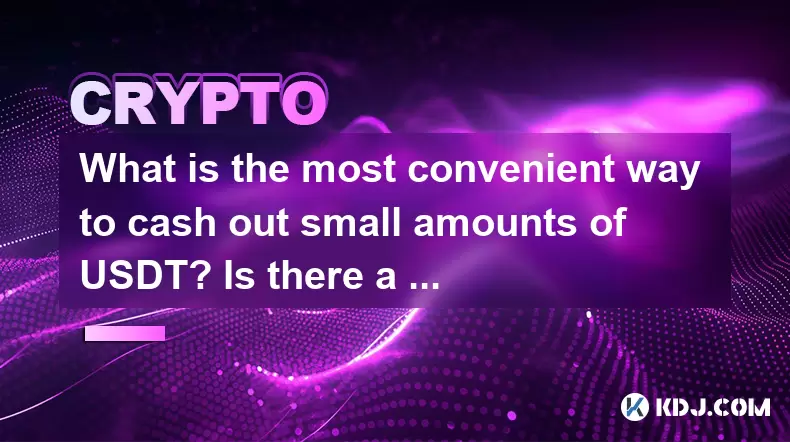
What is the most convenient way to cash out small amounts of USDT? Is there a shortcut?
Jun 11,2025 at 11:00pm
Understanding the Need to Cash Out Small USDT AmountsCashing out small amounts of USDT can be a challenge for many crypto users. Traditional methods o...

How to transfer USDT to PayPal or international payment tools?
Jun 15,2025 at 05:28am
Understanding the Basics of USDT and PayPal IntegrationUSDT (Tether) is a stablecoin pegged to the US dollar, offering blockchain-based value transfer...
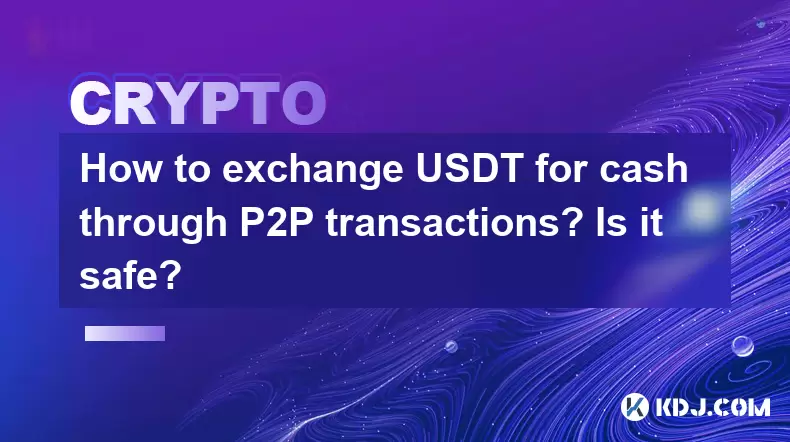
How to exchange USDT for cash through P2P transactions? Is it safe?
Jun 18,2025 at 07:56am
Understanding USDT and P2P TransactionsTether (USDT) is a stablecoin pegged to the value of the US dollar, making it a popular choice for users who wa...
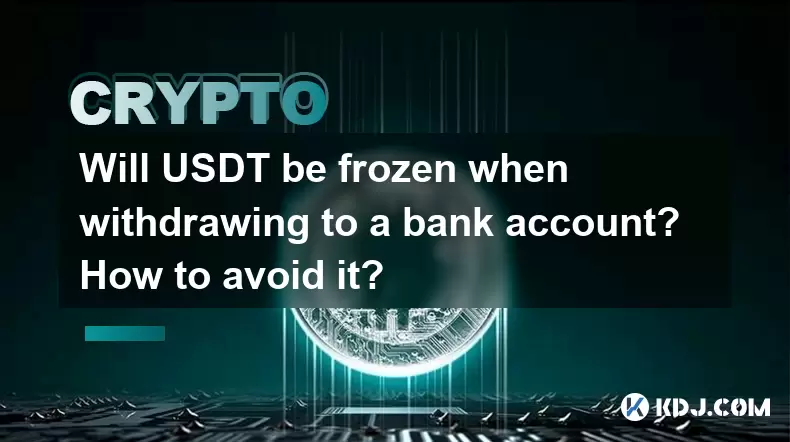
Will USDT be frozen when withdrawing to a bank account? How to avoid it?
Jun 15,2025 at 10:03am
Understanding USDT Withdrawals and Bank Account Freezing RisksWhen users decide to withdraw USDT (Tether) to a bank account, one of the most common co...
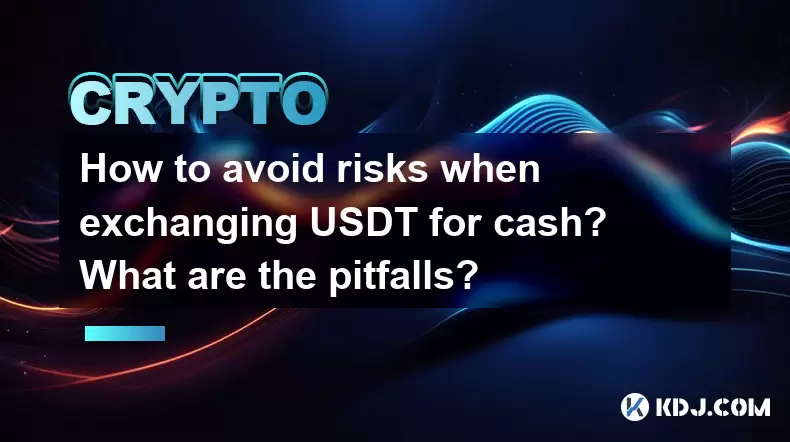
How to avoid risks when exchanging USDT for cash? What are the pitfalls?
Jun 11,2025 at 08:14pm
Understanding the Risks of Exchanging USDT for CashWhen exchanging USDT (Tether) for cash, users must be aware of the potential risks involved. As a s...

How to choose a reliable USDT exchange service provider? How to identify?
Jun 12,2025 at 03:15pm
Understanding the Role of USDT in Cryptocurrency TradingUSDT (Tether) is one of the most widely used stablecoins in the cryptocurrency market. It is d...

What is the most convenient way to cash out small amounts of USDT? Is there a shortcut?
Jun 11,2025 at 11:00pm
Understanding the Need to Cash Out Small USDT AmountsCashing out small amounts of USDT can be a challenge for many crypto users. Traditional methods o...

How to transfer USDT to PayPal or international payment tools?
Jun 15,2025 at 05:28am
Understanding the Basics of USDT and PayPal IntegrationUSDT (Tether) is a stablecoin pegged to the US dollar, offering blockchain-based value transfer...

How to exchange USDT for cash through P2P transactions? Is it safe?
Jun 18,2025 at 07:56am
Understanding USDT and P2P TransactionsTether (USDT) is a stablecoin pegged to the value of the US dollar, making it a popular choice for users who wa...

Will USDT be frozen when withdrawing to a bank account? How to avoid it?
Jun 15,2025 at 10:03am
Understanding USDT Withdrawals and Bank Account Freezing RisksWhen users decide to withdraw USDT (Tether) to a bank account, one of the most common co...

How to avoid risks when exchanging USDT for cash? What are the pitfalls?
Jun 11,2025 at 08:14pm
Understanding the Risks of Exchanging USDT for CashWhen exchanging USDT (Tether) for cash, users must be aware of the potential risks involved. As a s...
See all articles

























































































